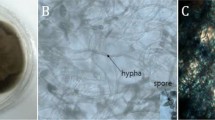Abstract
Four-week-old chamomile (Matricaria chamomilla) plants were exposed for 72 h to 0.01, 0.1 and 1 mM phenylalanine (Phe) or tyrosine (Tyr). Phe at all concentrations significantly increased phenylalanine ammonia-lyase (PAL) activity (by 30, 76 and 90%, respectively) as well as accumulation of coumarin-related compounds (herniarin and its precursors (Z)- and (E)-2-β-D-glucopyranosyloxy-4-methoxycinnamic acids). Free Phe content increased significantly at the highest dose tested. Lower Tyr concentrations (0.01 and 0.1 mM) significantly increased PAL activity and increased free Tyr content, however free Phe content decreased. This indicated that Tyr-mediated stimulation of PAL is coupled to Phe consumption. Notwithstanding, Tyr had no effect on coumarin accumulation. Therefore we speculate that in chamomile a regulation/signalling mechanism could be operating in the pathway leading to coumarin synthesis. The malondialdehyde accumulation, an usual marker of stress in plants, was not significantly changed by amino acid supplements, suggesting that membrane damage is not the signal causing coumarin accumulation. In parallel experiment we observed that neither lower (0.25 × full strength), nor higher (3 × full strength) nitrogen concentration of nutrient solution compared to normal (1 × full strength, 205 mg N l-1) solution used for Phe/Tyr supply affected herniarin and GMCAs accumulation. This indicates that Phe had stimulatory effect on PAL activity and coumarin metabolism.




Similar content being viewed by others
Abbreviations
- DW:
-
Dry weight
- FW:
-
Fresh weight
- GMCAs:
-
(Z)- and (E)-2-ß-D-glucopyranosyloxy-4-methoxycinnamic acids
- PAL:
-
Phenylalanine ammonia-lyase
- Phe:
-
Phenylalanine
- t-CA:
-
trans-Cinnamic acid
- Tyr:
-
Tyrosine
- MDA:
-
Malondialdehyde
References
Berner M, Krug D, Bihlmaier C, Vente A, Müller R, Bechthold A (2006) Genes and enzymes involved in caffeic acid biosynthesis in the Actinomycete Saccharothrix espanaensis. J Bacteriol 188:2666–2673
Brown SA (1963) Biosynthesis of the coumarins IV. The formation of coumarin and herniarin in lavender. Phytochemistry 2:137–144
Ceska D, Romagnoli C, Bruni A (1992) Coumarins of Chamomilla recutita. Fitoterapia 63:387–394
Cochrane FC, Davin LB, Lewis NG (2004) The Arabidopsis phenylalanine ammonia lyase gene family: kinetic characterization of the four PAL isoforms. Phytochemistry 65:1557–1564
Dos Santos WD, Ferrarese MLL, Finger A, Teixeira ACN, Ferrarese-Filho O (2004) Lignification and related enzymes in Glycine max root growth-inhibition by ferulic acid. J Chem Ecol 30:1203–1212
Edahiro J-I, Nakamura M, Seki M, Furusaki S (2005) Enhanced accumulation of anthocyanin in cultured strawberry cells by repetitive feeding of L-phenylalanine into the medium. J Biosci Bioeng 99:43–47
Esterbauer H, Cheeseman KH (1990) Determination of aldehydic lipid peroxidation products: malonaldehyde and 4-hydroxynonenal. Method Enzymol 186:407–421
Gayova E, Kron I, Suchozova K, Pavlisak V (1998) Red cell, plasma and urine amino acid concentrations in patient with diabetes mellitus type I. Chem Pap–Chem Zvesti 52:806–808
Harborne JB (1980) Plant phenolics. In: Bell EA, Charlwood BV (eds) Secondary plant products. Springer-Verlag, pp 329–402
Jones CG, Hartley SE (1999) A protein competition model of phenolic allocation. Oikos 27:27–44
Khan W, Prithiviraj B, Smith DL (2003) Chitosan and chitin oligomers increase phenylalanine ammonia-lyase and tyrosine ammonia-lyase activities in soybean leaves. J Plant Physiol 160:859–863
Kováčik J, Repčák M, Kron I (2006a) Nitrogen deficiency induced changes of free amino acids and coumarin contents in the leaves of Matricaria chamomilla. Acta Physiol Plant 28:159–164
Kováčik J, Tomko J, Bačkor M, Repčák M (2006b) Matricaria chamomilla is not a hyperaccumulator, but tolerant to cadmium stress. Plant Growth Regul 50:239–247
Kováčik J, Klejdus B, Bačkor M, Repčák M (2007) Phenylalanine ammonia-lyase activity and phenolic compounds accumulation in nitrogen-deficient Matricaria chamomilla leaf rosettes. Plant Sci 172:393–399
Montero T, Mollá E, Martín-Cabrejas MA, López-Andréu FJ (1998) Effects of gibberelic acid (GA3) on strawberry PAL (phenylalanine ammonia-lyase) and TAL (tyrosine ammonia-lyase) enzyme activities. J Sci Food Agric 77:230–234
Repčák M, Imrich J, Franeková M (2001a) Umbelliferone, a stress metabolite of Chamomilla recutita (L.) Rauschert. J Plant Physiol 158:1085–1087
Repčák M, Pastírová A, Imrich J, Švehlíková V, Mártonfi P (2001b) The variability of (Z)- and (E)−2-ß-D-glucopyranosyloxy−4-methoxycinnamic acids and apigenin glucosides in diploid and tetraploid Chamomilla recutita. Plant Breeding 120:188–190
Ritter H, Schulz GE (2004) Structural basis for the entrance into the phenylpropanoid metabolism catalyzed by phenylalanine ammonia-lyase. Plant Cell 16:3426–3436
Rösler J, Krekel F, Amrhein N, Schmid J (1997) Maize phenylalanine ammonia-lyase has tyrosine ammonia-lyase activity. Plant Physiol 113:175–179
Schilcher H, Imming P, Goeters S (2005) Active chemical constituents of Matricaria chamomilla L. syn. Chamomilla recutita (L.) Rauschert. In: Franke R, Schilcher H (eds) Chamomile industrial profiles. Taylor & Francis, Boca Raton, pp 55–76
Sivakumar G, Krishnamurthy KV, Hao J, Paek KY (2004) Colchicine production in Gloriosa superba calluses by feeding precursors. Chem Nat Compd 40:499–502
Suzuki LS, Herrig V, Ferrarese MLL, Rodrigues JD, Ferrarese-Filho O (2003) Simultaneous effects of ferulic and vanillic acids on peroxidase and phenylalanine ammonia-lyase in soybean (Glycine max) roots. Phyton 43:179–185
Acknowledgements
This work was supported by the Slovak Grant Agency VEGA (1/3260/06). The authors thank Prof. Dianne Fahselt (University of Western Ontario, Canada) for constructive comments on the manuscript. Mrs. Anna Michalčová and Mrs. Margita Buzinkaiová are also acknowledged for their excellent technical assistance.
Author information
Authors and Affiliations
Corresponding author
Rights and permissions
About this article
Cite this article
Kováčik, J., Kron, I., Repčák, M. et al. Effect of feeding precursors on phenylalanine ammonia-lyase activity and coumarin accumulation in leaves of Matricaria chamomilla L.. Plant Growth Regul 52, 9–15 (2007). https://doi.org/10.1007/s10725-007-9172-4
Received:
Accepted:
Published:
Issue Date:
DOI: https://doi.org/10.1007/s10725-007-9172-4




